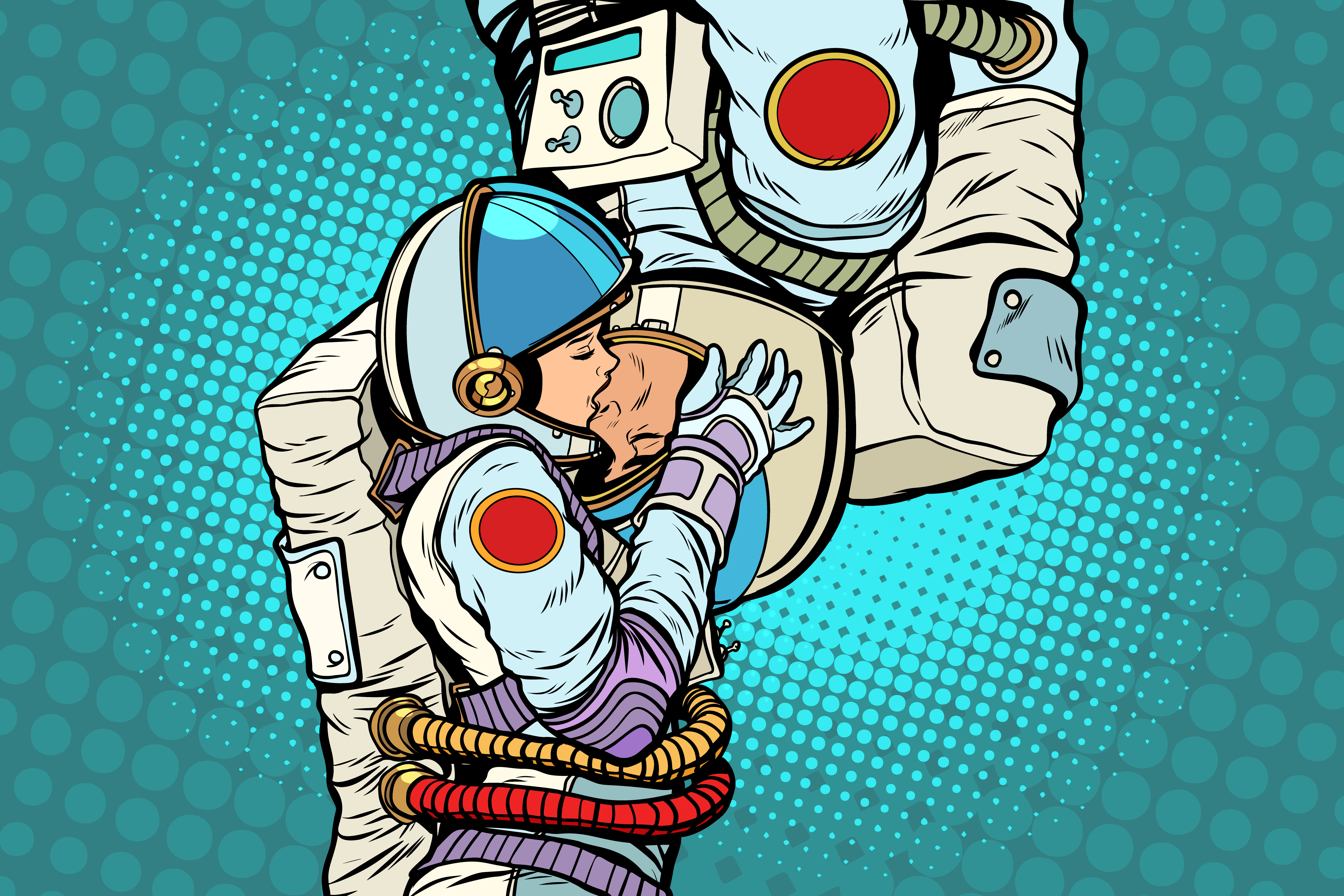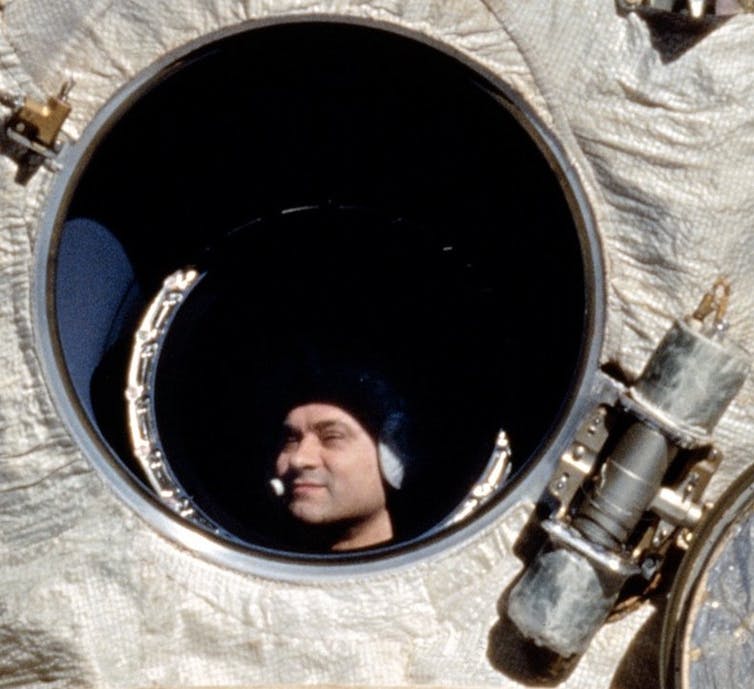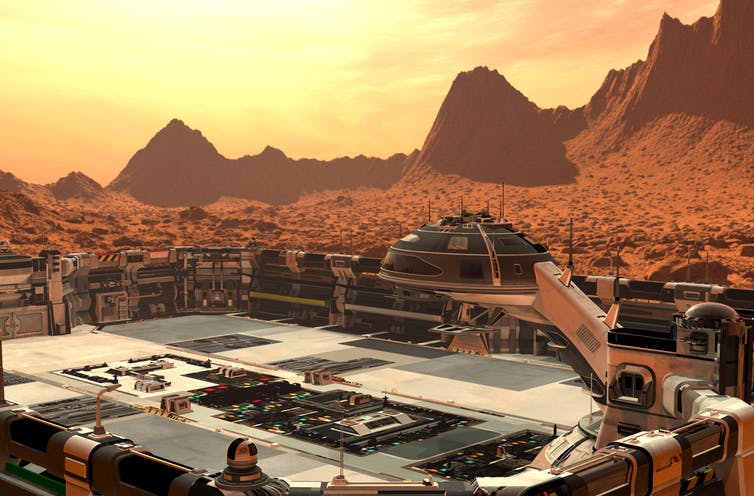
Sex in space: could technology meet astronauts' intimate needs?

This article was originally published at The Conversation. The publication contributed the article to Space.com's Expert Voices: Op-Ed & Insights.
Simon Dubé, PhD candidate, Psychology, Concordia University
Dave Anctil, Chercheur affilié à l'Observatoire international sur les impacts sociétaux de l’intelligence artificielle et du numérique (OBVIA), Université Laval
The 2018 movie A.I. Rising explores how machines could fulfill desires and support humans during space travel. Lo and behold, it might contain the solution to problems related to space exploration.
Astronauts, despite their rigorous training, remain humans with needs. For space exploration and colonization to succeed, we need to overcome taboos, consider human needs and desires and provide concrete, realistic solutions based on science rather than conventional morality.
Can humans thrive for prolonged periods of time in small groups and in closed, isolated environments? Can humans contend with limited possibilities of relationships, intimacy and sexuality?
Sex tech might have the answer.
Get the Space.com Newsletter
Breaking space news, the latest updates on rocket launches, skywatching events and more!
As researchers exploring human-machine erotic interactions, we are interested in their implications and potential applications for human well-being — even beyond our home planet.
Sex in space
Space exploration and colonization is one of humanity’s greatest endeavours, but it comes with challenges. One of them is to make the space journey human compatible, that is, physically and psychologically viable. Given that intimacy and sexuality are basic needs, they become central issues for human-space compatibility.
How will humans have sex in space? Can we propagate the species beyond Earth? What will intimate relationships look like aboard spaceships and settlements?
As of now, NASA and other space agencies have denied that any sexual activity has ever occurred during a space mission. Either sex in space hasn’t happened, or no one is talking about it. Nonetheless, imminent prolonged human missions to the moon and Mars raise concerns regarding the future of intimacy and sexuality in space.
One important concern is that space exploration and colonization will limit people’s opportunities for relationships, intimacy and sexuality for long periods of time. In the very near future, human missions will only include small crews and settlements. Fewer people mean fewer opportunities for intimacy — making it difficult to find partners to connect with and potentially increasing tension between crew members.
For instance, it might be difficult to find partners that fit our personality, preferences and sexual orientation. And when a relationship ends, people are stuck on a ship with an ex-partner — possibly impairing a crew’s mood and the teamwork necessary to survive in dangerous environments.
Human needs
While some people might be able to withstand a policy of total abstinence, it might be detrimental to the physical and mental health of others — especially as larger groups venture into space. Yet NASA seems afraid of tackling issues of intimacy and sexuality in space. In 2008, Bill Jeffs, spokesperson for NASA’s Johnson Space Center in Houston, said: “We don’t study sexuality in space, and we don’t have any studies ongoing with that. If that’s your specific topic, there’s nothing to discuss.”
Given what we know about human sexuality, this position seems irresponsible. It prevents research from examining basic questions about sexual health and well-being in space. For instance, how do we deal with hygiene and the messiness of human sex in zero-gravity? How will we maintain a crew’s psychological well-being if people must endure long periods lacking in erotic stimulation and affection? Is imposed abstinence a reasonable solution, based on empirical evidence?

Sex tech and 'erobots'
One solution could be to make erotic technologies available to crews and settlers in space.
This could include sex toys — any object used for sexual enhancement or stimulation — which could be used for sexual pleasure and gratification. But sex toys do not address the social dimensions of human erotic needs. This is where erobots come in.
The term erobots characterizes all virtual, embodied and augmented artificial erotic agents and the technologies that produce them. Examples include sex robots, erotic chatbots and virtual or augmented partners. Erobotics is the emerging transdisciplinary research studying human-erobots interactions and related phenomena.
Unlike previous technologies, erobots offer the opportunity of intimate relations with artificial agents tailored to the needs of their users. Erobotic technologies polarize public and academic discourses: some denounce them as promoting harmful norms, while others defend their potential benefits and health, education and research applications.
Erobots represent a practical solution to tackle the inhuman conditions of space exploration and colonization. Moreover, erobotics could enable us to approach questions of intimacy and sexuality in space from scientific, relational and technological perspectives.
Erobots could provide companionship and sexual pleasure to crew members and settlers. Beyond the capabilities of sex toys, erobots can incorporate social dimensions into erotic experiences. They could help with loneliness and the inevitable anxieties borne out of solitude. They could act as surrogate romantic partners, provide sexual outlets and reduce risks associated with human sex.
Erobots could also provide intimacy and emotional support. And finally, erobots’ sensors and interactive capabilities could help monitor astronauts’ physiological and psychological health — acting as a complement to daily medical exams.
Erobots can take many forms and be made of light material. They can manifest through virtual or augmented reality and be combined with sex toys to provide interactive and immersive erotic experiences. The same technology could also be employed to enact erotic experiences with loved ones back on Earth.

Moving into space
To harness erotic technology’s potential for human space missions, we must build collaborations between academia, governmental space programs and the private sector.
Erobotics can contribute to space research programs. As a field grounded in sexuality and technology positive frameworks, it recognizes the importance of intimacy and sexuality in human life and promotes the development of technology geared towards health and well-being.
And ultimately, we must shed our taboos regarding technology and sexuality as we journey to the final frontier.
This article is republished from The Conversation under a Creative Commons license. Read the original article.
Follow all of the Expert Voices issues and debates — and become part of the discussion — on Facebook and Twitter. The views expressed are those of the author and do not necessarily reflect the views of the publisher.
- In Photos: A behind-the-scenes look at SpaceX's Crew Dragon spaceship
- Bigelow Space wants to launch you into orbit with SpaceX for $52 Million
- Boeing’s CST-100 Starliner: A 21st century space capsule in photos
OFFER: Save at least 56% with our latest magazine deal!
All About Space magazine takes you on an awe-inspiring journey through our solar system and beyond, from the amazing technology and spacecraft that enables humanity to venture into orbit, to the complexities of space science.
Join our Space Forums to keep talking space on the latest missions, night sky and more! And if you have a news tip, correction or comment, let us know at: community@space.com.










